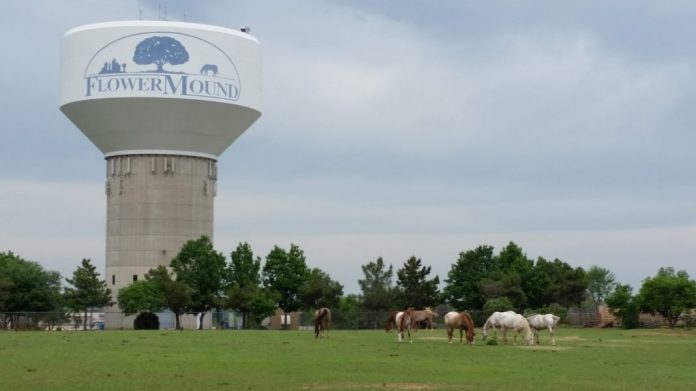There’s no doubt that Flower Mound residents enjoy the canopy of trees the town has shading its streets and homes.
To that end, there’s also a question about how to responsibly ensure that canopy is not dismantled as the town grows by leaps and bounds. The town council is considering making changes to the tree ordinance on the books, and until Monday night that included a possible moratorium on tree removal permits in commercial areas that affects trees.
“The beautiful canopy that we see now is because someone took the care and took the time to develop trees,” said Ron Hilliard to the council.
“I love trees. When you come down 3040 you see all these beautiful live oak trees along the way.”
At its June 1 meeting, council discussed a possible moratorium on new commercial development until the town’s tree ordinance is reviewed and updated as necessary. Monday night, close to midnight, Councilman Brian Rountree, who initiated the talks, moved to reject the idea of a moratorium.
Hilliard’s family has been in Flower Mound since 1856. In the 1960s, he helped plant the pine trees that line Morriss Road. He suggests the town be cautious when bringing this situation to a halt.
“A moratorium stops everything,” he said, adding that the last moratorium the town imposed was regarding house building. “We haven’t fully recovered from that.
“Be careful when you use the word ‘moratorium.’”
The town’s trees are part of the 150-mile Cross Timbers woodland region that runs north and south from north central Texas up through Oklahoma and Kansas. In 2014, the town celebrated its re-certification as a “Tree City USA” by the Arbor Day Foundation for the 20th consecutive year. Flower Mound is one of only 77 municipalities in Texas to earn this honor.
Town Planner Tommy Dalton presented a timeline for the moratorium process. With required notices, a public hearing before the planning and zoning committee and then town council, the town likely would have a chance to hear feedback from town committees in time to avoid a moratorium totally.
Councilman Brian Rountree, who initiated the idea of a moratorium, said the idea is to create a stop-gap measure. He also moved to reject imposing a moratorium citing time constraints.
“It’s not worth all the effort to go through a 21-day moratorium,” he said.
“None of this was designed to stop businesses from growing,” Rountree said. “The ultimate goal is to preserve as many trees as possible.”
This moratorium would have only applied to trees that require a removal permit in the first place, said Town Attorney Bryn Meredith. Any vested property could not legally be included in this moratorium.
Long-time resident and Environmental Conservation Commission member Alton Bowman weighed in on the tree discussion back in May when it came before the town council. He highlighted problems involving the exemption for tree mitigation in the town’s Special Plan Area (SPA) Developments, especially in the approximately 1,465 acre Tax Increment Reinvestment Zones (TIRZ) along the FM 2499 corridor.
The TIRZ were created in 2005 to provide funds for public infrastructure and proposed improvement projects over a 20-year period.
The tree ordinance states that if a specimen tree is removed, for example a 20-caliper inch tree, double the number of caliper inches have to be used to replace it; therefore, 40-caliper inches divided by a 3-caliper inch replacement trees means that 13 new trees would be planted. For a protected tree, replacement must be one-for-one caliper inches. In SPA commercial developments, those mitigation requirements do not apply.
Bowman said that each year the number of trees not planted, because of the exemptions, is approximately 500 trees. Construction permit applicants outside a SPA can either plant trees or give the town $375 for each tree. In the SPA-exempt acres, last year’s un-planted trees or lost revenue equaled $187,000 to the tree fund.
Over the 14-year span of time that the mitigation has been in place, either 7,000 trees would have been planted, or the town would have received $2,400,000 for the tree fund.






















